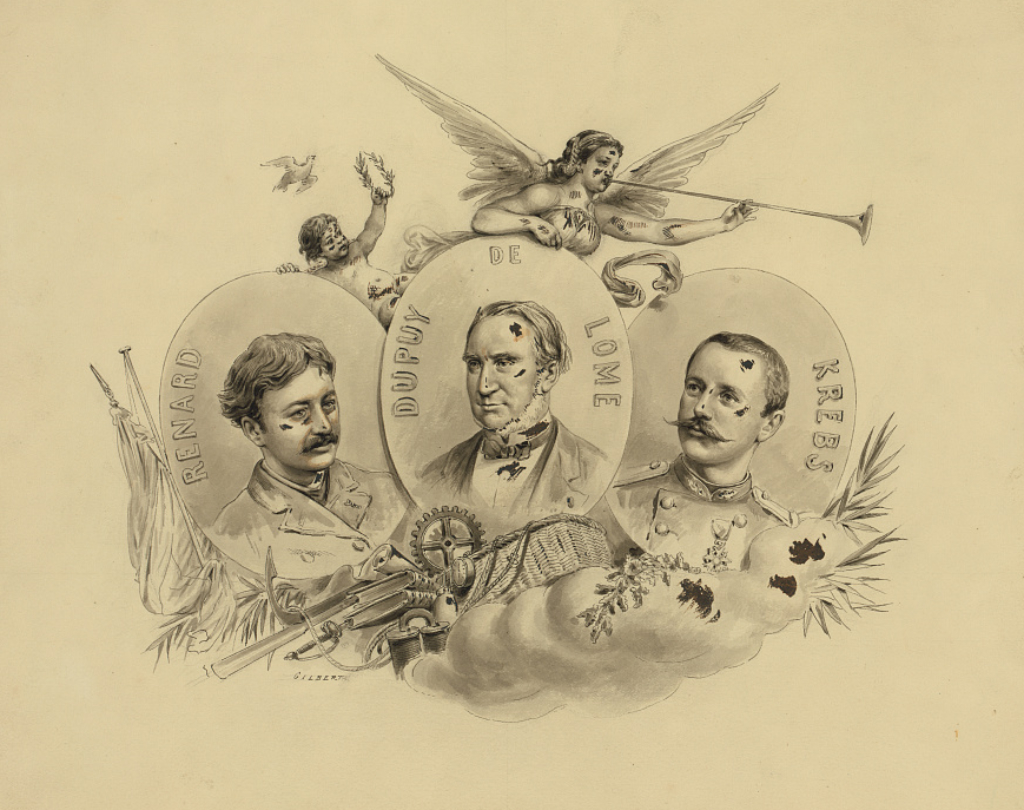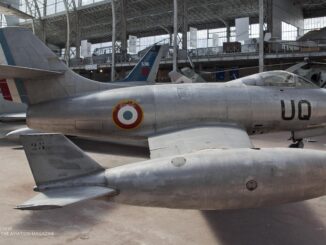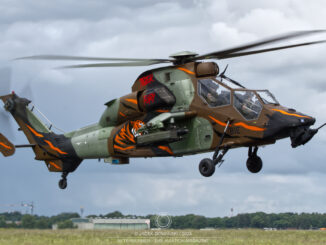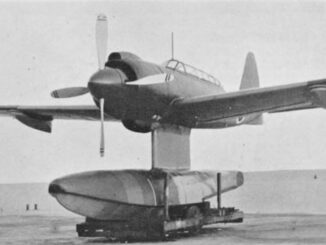 On 9th August 1884, Charles Renard and Arthur Constantin Krebs performed the first fully controlled free flight with La France, a non-rigid airship they developed for the French Army.
On 9th August 1884, Charles Renard and Arthur Constantin Krebs performed the first fully controlled free flight with La France, a non-rigid airship they developed for the French Army.
Charles Renard, born 1847 in Damblain, was a French military engineer. During the Franco-Prussian War of 1870-1871, namely the Siege of Paris, he – together with two other inventors, Dupuy de Lôme and Arthur Krebs – was assigned the task of creating a navigable balloon that could be practically used for military purposes. At that time, Paris was already surrounded by the enemy and cut off from the rest of the French territory. The navigable balloon seemed to be a solution for establishing permanent connection between the capital and the areas still under the French control.
Although none of the inventors managed to develop such an airship until the end of the siege, they continued with their works after the war.
In 1884, Renard, together with Arthur and Paul Krebs, developed a non-rigid airship named La France. The aerostat was 52 m long and featured an envelope with a diameter of 8.4 m and 1,900 m³ capacity. La France was equipped with two-blade propellers, powered by a 6.62 kW electric engine which used a zinc-chlorine electric battery. The airship could fly with a speed of up to 12 knots (approximately 23 kph) and it had a range of 6.6 nautical miles (approximately 12 kilometres).
On 9th August 1884, La France piloted by Renard and Arthur Krebs, made its first successful flight at a distance of 8 km. The journey lasted 23 minutes and it was the first full closed-circuit flight in history of aviation, with the same starting and landing point.

Until the end of next year, La France performed a total of seven flights. In five of them, the airship managed to return to the starting point. In 1889, La France was exhibited in the French sector of Exposition Universelle in Paris.
An interesting fact is that Charles Renard was also an inventor of preferred number system, which became standard guidelines for choosing exact product dimensions. It was later known as Renard numbers and then adopted as international system ISO 3 in 1952.
Arthur Constantin Krebs, born 1850 in Vesoul, was a French officer, engineer and pioneer of aviation and automotive industry. Apart from his works on aerostats, Krebs – together with Gustave Zédé – invented the first modern French submarine, Gymnote. She was equipped with the first naval periscope and the first naval gyrocompass.
Krebs also modernised the Paris fire department, patented an automobile with electromagnetic gearbox, invented automatic carburettor and shock absorber, as well as the first elastomeric flexible coupling.
In 1886, Krebs and Renard were awarded the Ponti prize of the French Academy of Sciences, for their contribution to development of aerostats.
In the same year, Jules Verne published his new novel, ´Robur the Conqueror´, where he described ´the striking experiments of Captain Krebs and Captain Renard´.
For more information about the post-war airship developments of Henri Dupuy de Lôme, please refer to our article from February of 2024: 2 February 1872 – maiden flight of Dupuy de Lôme dirigible balloon.

Cover photo: Postcard featuring a hand-drawn illustrated depiction of the La France French army non-rigid airship. This postcard is part of a set originally collected in a scrapbook entitled Album Gravures et Cartes-Postales: Vieux Paris Types Petits Métiers et Cris De La Rue (1909). Courtesy of Science History Institute, Philadelphia / vd66w081t / cropped.



